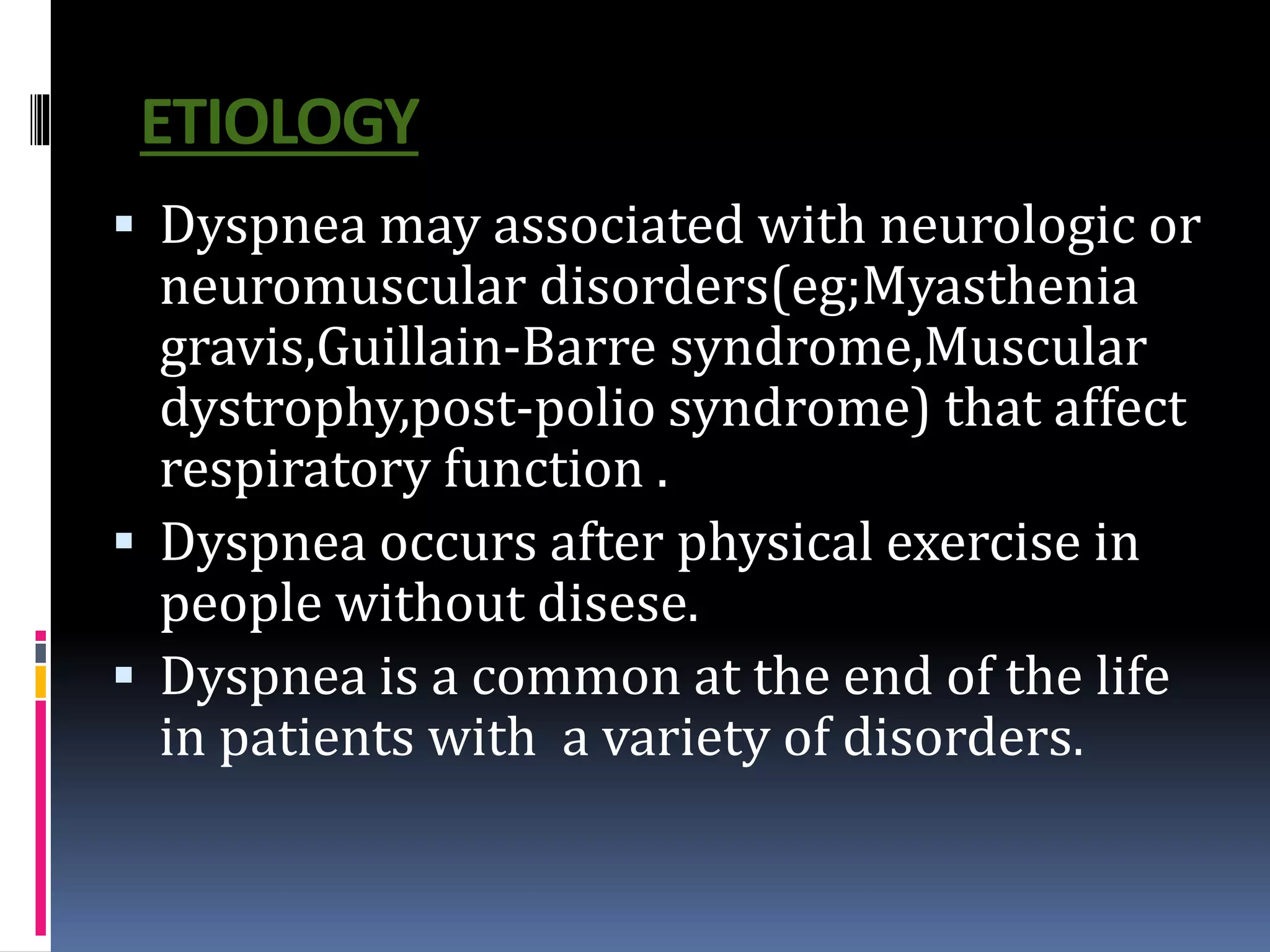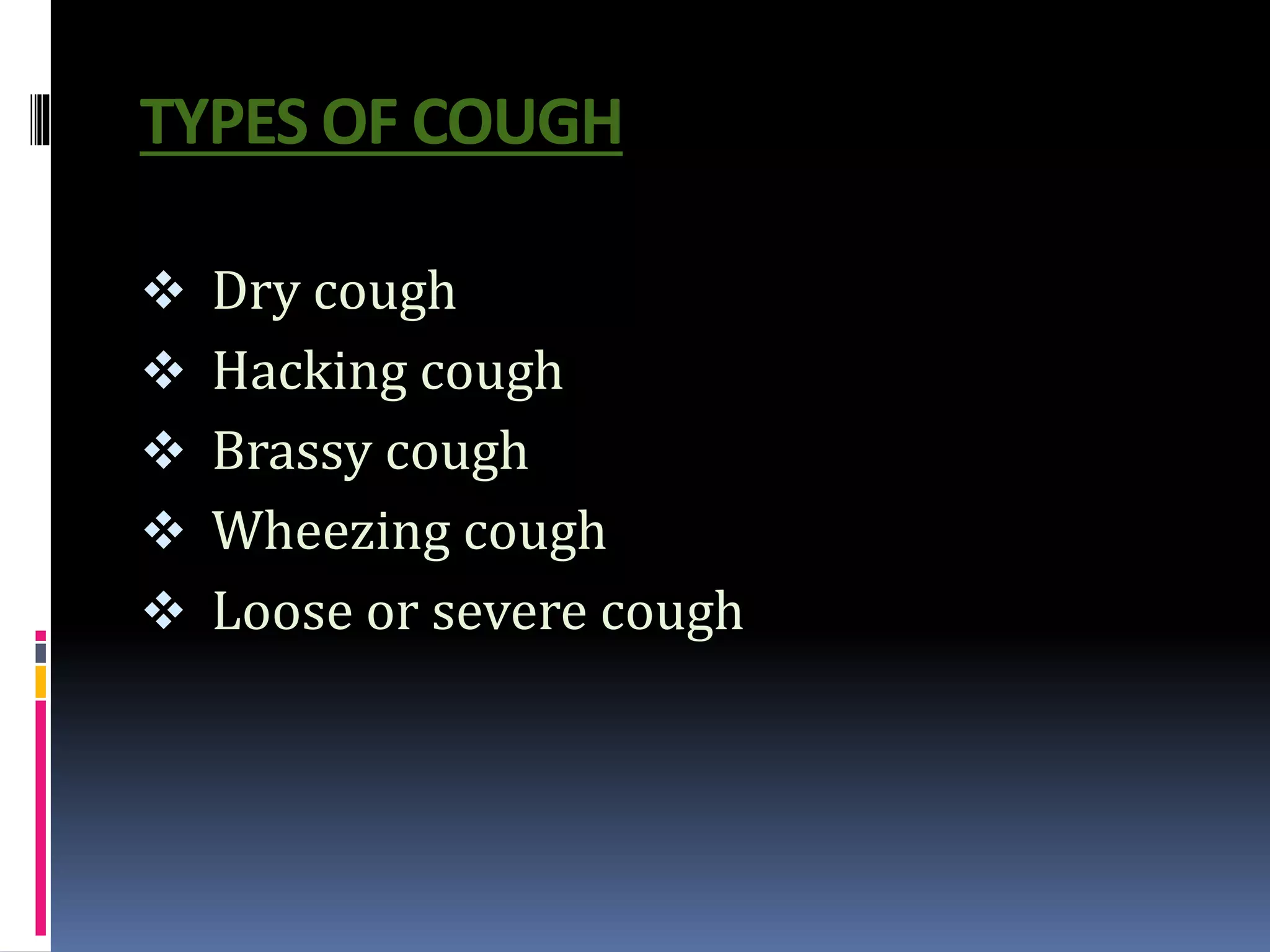This document discusses dyspnea (shortness of breath) and cough, including their definitions, causes, types, complications, assessments, and management. Dyspnea is a subjective symptom often seen in lung diseases and disorders that can decrease lung function. Its treatment varies and may include oxygen therapy, medications like opioids, bronchodilators, and non-pharmacological interventions. Cough is a reflex to clear the lungs and airways and can indicate various respiratory conditions. Nursing focuses on airway clearance and monitoring for dyspnea and cough.



![DEFINITIONS
“Dyspnea is the term used when the subject is
conscious of the increased respiratory effort
.In other words difficulty in breathing.”
[R.Chandra Mouli]
“Dyspnea is a symptom common to many
pulmonary and cardiac disorders,particularly
when there is decreased lung complicance or
increased airway resistance.”
[Suresh K.Sharma,S.Madhavi]](https://image.slidesharecdn.com/coughanddyspnea-220322041003/75/COUGH-AND-DYSPNEA-pptx-4-2048.jpg)


















![DEFINITION
“Cough is a reflex that protects the lungs
from the accumulation of secreation of
foreign bodies.its presence or absence
can be diagnostic clue because some
disorders cause coughing and others
suppress it.”
[Brunner and Suddarth]](https://image.slidesharecdn.com/coughanddyspnea-220322041003/75/COUGH-AND-DYSPNEA-pptx-23-2048.jpg)











